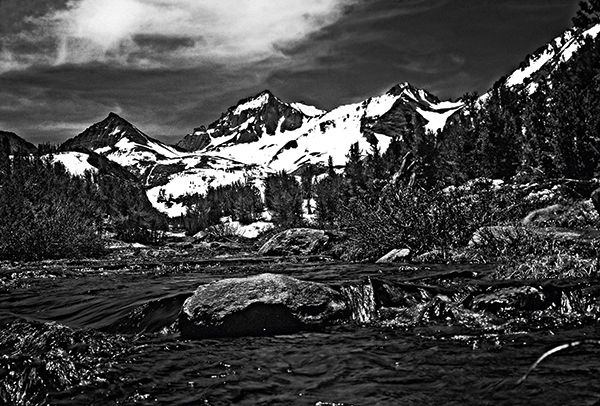How to Choose and Use the Right Wide-Angle Lenses: Getting the Most Out Of Your Wide Shots

All Photos © Ron Leach
Nothing beats the versatile wide-angle lens for street shooting, travel, and landscape photography. Whether you’re capturing mountain vistas or bustling street scenes, the wide-angle lens offers an ideal combination of features for quick, candid shooting.
In 35mm parlance, “wide angle” commonly refers to lenses wider than the standard 50mm lens, and can be grouped into three broad categories: 1) moderate wide angles; 2) ultra-wide angles; and 3) fisheyes. Unless you’re shooting with a full-frame DSLR, you’ll have to keep in mind the crop factor of your digicam—be it a Micro Four Thirds model, a camera with an APS-C sensor, or something else.
Moderate Wide-Angle Lenses
Lenses in the 24-35mm range comprise the moderate wide angles. These are typically the best choice for scenic photography, and can also be used for people pictures without the distortion of perspective found in wider lenses.
Because even moderate wide-angle lenses offer greater depth of field than normal or telephoto lenses, they permit you to shoot fast without critical focusing. When shooting candid street scenes I often set the camera to its Manual Focus mode, choose a medium aperture, prefocus about a third of the way into my scene, and let depth of field do the rest. These lenses also tend to be relatively inexpensive and offer fast maximum apertures for handheld, low-light shooting.

Ultra-Wide-Angle Lenses
Ranging from 17mm to 20mm, ultra-wide-angle lenses offer exaggerated perspectives for unusual effects—perfect for dramatic seascapes or silhouetting an interesting foreground subject against an evening sky. Subjects close to the camera will appear huge, while those further away will recede into the distance. When using these lenses your images will typically have more impact if you place a prominent foreground subject in your scene.
The ultra-wide angles are also useful for candid people pictures. Their expansive angle of view enables you to take photographs of people who won’t even realize they are in your shot: Simply place your subject near the edge of your composition, and it will appear as though you are pointing your camera toward something off to the side.
Fisheye Lenses
Available in focal lengths from 6mm to 16mm, these are specialized lenses with a rather limited application and tend to be very costly. They can, however, provide some striking effects. Fisheyes are the lenses responsible for those unique circular images that seem to actually bend the landscape. Obviously, they must be used judiciously and are only appropriate for certain subjects.
Maximizing Depth of Field
The wider the focal length of your lens, the greater the zone of acceptable sharpness it will provide, and as alluded to earlier, this means you can shoot in a hurry without taking the time for precise focusing.
For example, say you are using a 28mm lens: If you preset your focus at about 10 feet, the zone of acceptable sharpness in your image may extend all the way from about three feet to infinity! (A normal 50mm lens, on the other hand, may only yield a depth of field from, say, seven to 17 feet.)
A variety of wide-angle zoom lenses are also available. You can choose a compact, lightweight 19-35mm or 24-50mm; or a larger but more powerful 35-70mm or 28-105mm. Or, if you want to travel light, how about one of the 28-300mm all-in-one zooms? Contrary to what you might think, the optical quality of the newest wide-to-telephoto zoom lenses is quite good.
Regardless of whether you choose a zoom or a prime lens, the next time you go out shooting, why not give the wide-angle approach a try?













































